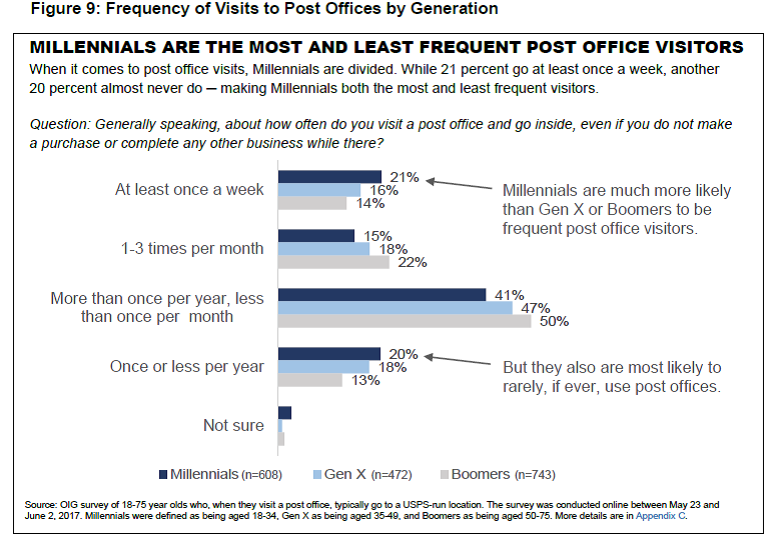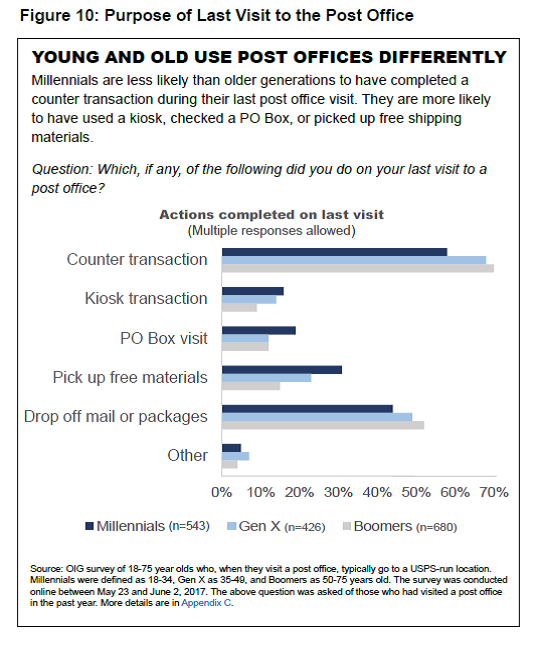News & information
Economics
The total number of visits to post offices can be a difficult variable to measure. One of the main problems with the official statistics is that they only measure visits based on transactions. If a customer walks in and checks a P.O. box, it is not counted in the official numbers as a visit to the post office.
A new model developed by the U.S. Postal Service’s Office of the Inspector General (OIG) is attempting to factor in non-transactional visits to provide a better estimate of post office usage. The model and findings are the subject of a new study, released this week by the OIG, which indicates that there are more customers who visit post offices than official statistics show.
The OIG estimates that the total number of visits in Fiscal Year 2016 was 2.7 billion, triple the official figure of 877 million. This news is not only valuable for the Postal Service’s business operations, but also the future of the Postal Service as an entity.
The survey results for millennial usage are also encouraging for the Postal Service’s long-term future. Contrary to popular belief, this age demographic (usually described as individuals born between 1980 and 2000) visit post offices more than older generations. In fact, the OIG found a negative correlation between age and frequency of visits.

The OIG also found that millennials are more likely to visit a post office to pick up free materials, visit P.O. boxes and make a kiosk transaction, more than other age groups. The most popular activities among all age groups continue to be counter transactions and dropping off mail or packages.

How to capture and hold the market for younger customers will be a major concern of the Postal Service going forward, especially as technology and lifestyles continue to change. However, the main results of this study indicate that post offices are more visited than previously believed and that young people are a factor driving this high usage.
